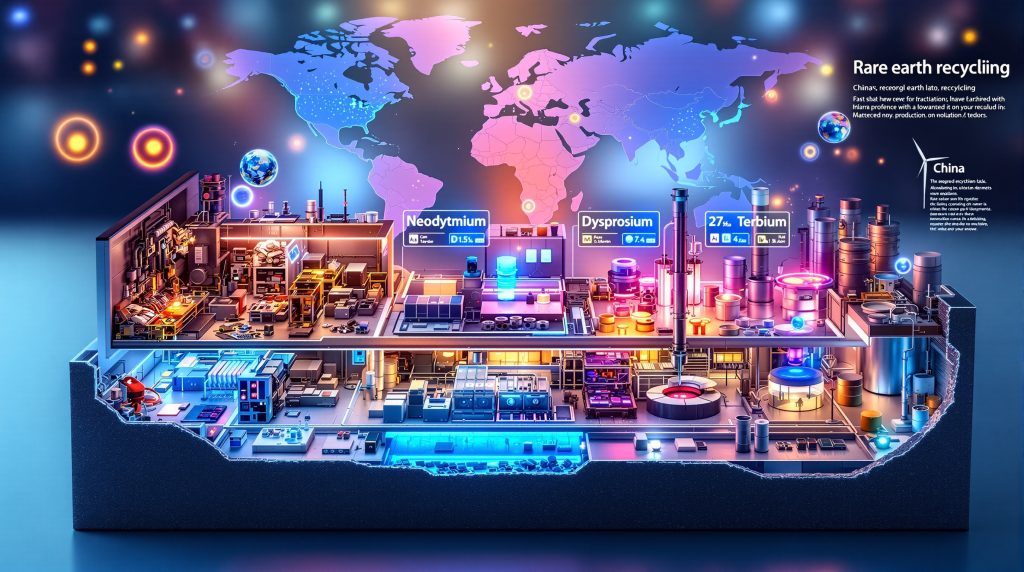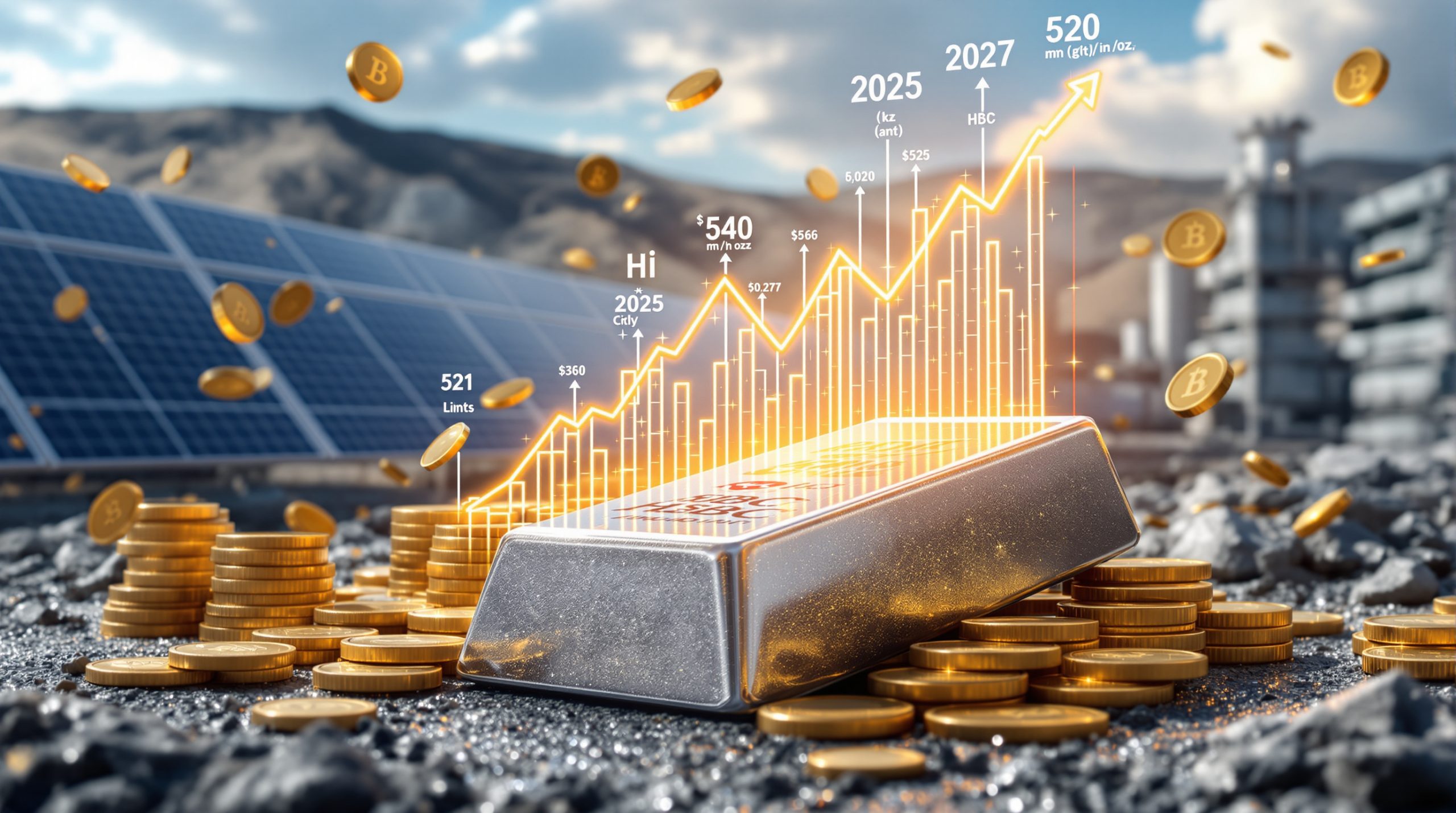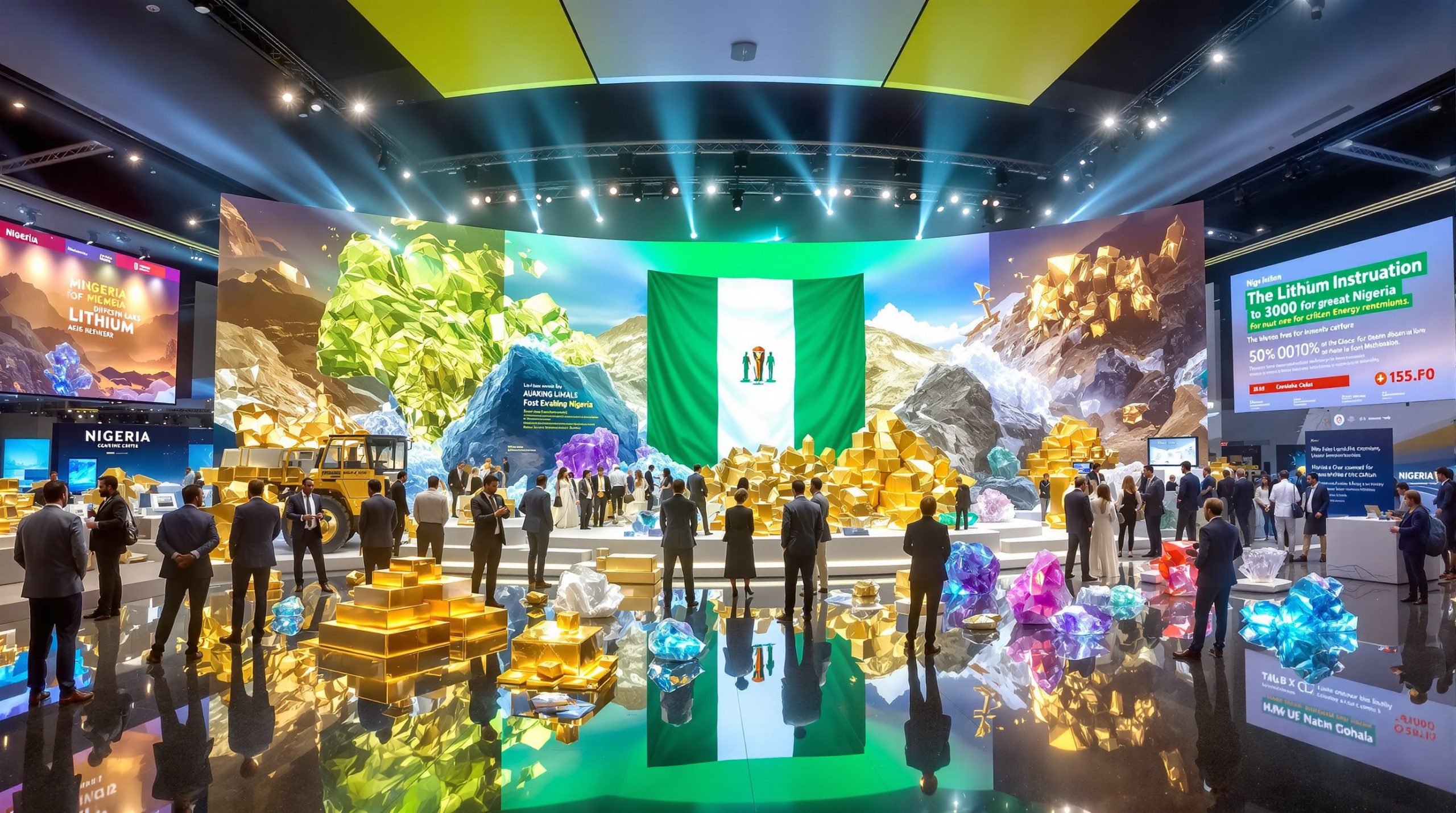What Are Rare Earth Magnets and Why Recycle Them?
Rare earth magnets, primarily neodymium-iron-boron (NdFeB) and samarium-cobalt (SmCo) varieties, power countless modern technologies from electric vehicles to wind turbines and consumer electronics. These powerful permanent magnets contain critical rare earth elements (REEs) including neodymium (Nd), praseodymium (Pr), dysprosium (Dy), and terbium (Tb).
Despite their name, rare earth elements aren't particularly rare in the Earth's crust. However, economically viable deposits are geographically concentrated, with China controlling approximately 85% of global processing capacity. This market dominance creates significant supply chain vulnerabilities for Western economies, particularly as demand surges for clean energy technologies.
Recycling offers several compelling advantages:
- Supply security: Creates alternative domestic sources independent of geopolitical tensions
- Environmental benefits: Reduces mining impacts, including radioactive waste and habitat destruction
- Economic efficiency: Requires significantly less capital than new mining operations
- Speed to market: Recycling facilities can be operational much faster than mines
- Strategic focus: Targets only the highest-value elements rather than processing all rare earths
The manufacturing process is notably inefficient—when manufacturers create magnets, only 60-75% of the rare earth oxides used actually end up in the finished product. This creates a significant opportunity for magnet rare earth recycling through recapturing the 25-40% of materials that become production waste or "swarf" during manufacturing.
What Makes Heavy Rare Earths Strategically Critical?
The rare earth family includes 17 elements, but not all are equally valuable or strategically important. The "magnet rare earths" – particularly neodymium, praseodymium, dysprosium, and terbium – represent 85-90% of the economic value in the rare earth supply chain.
Among these, the heavy rare earths dysprosium and terbium are especially critical because:
- They're essential for high-temperature performance in advanced magnets
- Until recently, 99-100% of commercial quantities came from China
- They command significantly higher prices than light rare earths
- They're subject to stricter export controls from China
- Few viable primary sources exist outside China
This strategic importance was highlighted in April 2023 when China implemented export restrictions on seven rare earth elements, triggering price spikes particularly for heavy rare earths. In some European markets, dysprosium has traded at three times Chinese quoted prices as manufacturers scramble for non-Chinese sources. Furthermore, the rare earth reserves outlook highlights ongoing concerns about future supply availability.
Historical precedent shows the potential for extreme volatility—during the 2011 rare earth crisis, dysprosium prices increased by 26-fold when China restricted exports. Today's market conditions appear to be trending toward similar disruption, with manufacturers reporting dozens of urgent inquiries for non-Chinese magnet supplies.
How Does the Rare Earth Magnet Recycling Process Work?
Rare earth magnet recycling involves several distinct approaches, each with different advantages and applications:
1. Collection and Sorting
The first challenge in any recycling operation is securing consistent feedstock. Sources include:
- Manufacturing waste: During magnet production, 25-40% of rare earth materials become production scrap or "swarf"
- End-of-life products: Consumer electronics, electric motors, wind turbines, and industrial equipment
- Industrial partnerships: Arrangements with electronics recyclers and automotive dismantlers
The material must be sorted to identify NdFeB magnets from other types, often through automated systems using magnetic properties and spectroscopic analysis.
2. Pre-processing Methods
Before chemical separation, magnets undergo physical preparation:
- Demagnetization: Heating above the Curie temperature (310-400°C) to remove magnetic properties
- Mechanical processing: Crushing, grinding, or shredding to increase surface area
- Hydrogen decrepitation: Exposing magnets to hydrogen gas, causing them to break down into fine powder
- Coating removal: Eliminating nickel, zinc, or epoxy coatings that protect the underlying magnet
3. Chemical Separation Technologies
Several approaches extract and separate rare earth elements:
Hydrometallurgical Processing
This water-based chemical approach involves:
- Leaching: Dissolving the crushed magnet material in acid solutions
- Precipitation: Selectively removing impurities through pH adjustment
- Solvent extraction: Using specialized chemicals to separate individual rare earth elements
- Crystallization: Converting purified solutions into solid rare earth compounds
This method achieves high purity but requires careful management of chemical reagents.
Pyrometallurgical Processing
This high-temperature approach includes:
- Roasting: Heating magnets with additives to convert REEs to more processable forms
- Smelting: Melting the material and separating elements based on density and melting points
- Refining: Further purification through additional heat treatments
While energy-intensive, these methods can handle mixed or contaminated feedstock.
Direct Recycling (Short-Loop)
This approach aims to preserve the magnet alloy structure:
- Hydrogen Processing of Magnet Scrap (HPMS): Using hydrogen to break down magnets into powder
- Alloy preservation: Maintaining the original composition rather than separating elements
- Reprocessing: Converting powder directly into new magnets with minimal chemical processing
This method requires cleaner, more homogeneous input materials but uses fewer resources.
4. Purification and Product Creation
The final stages transform separated materials into market-ready products:
- Oxide production: Converting rare earth compounds into high-purity oxides
- Metal reduction: Converting oxides to metals through electrolysis or metallothermic reduction
- Alloy formation: Combining rare earth metals with iron, boron, and other elements
- Magnet manufacturing: Creating new permanent magnets from recycled materials
A key technical challenge is handling variability in feedstock. Magnets from different manufacturers have different specifications and "recipes," requiring sophisticated separation technology to produce consistent output quality. Companies with advanced separation capabilities can produce high-purity separated oxides suitable for high-end applications like EV motors and defense equipment.
What Makes Recycled Rare Earths Commercially Viable?
Several factors contribute to the growing commercial viability of rare earth recycling:
Economic Drivers
- Price volatility protection: Recycling provides insulation against China's market dominance
- Floor pricing mechanisms: Government initiatives establishing minimum prices for materials like NdPr
- Premium pricing: Non-Chinese sources often command higher prices due to supply security concerns
- Capital efficiency: Recycling facilities require a fraction of the investment needed for new mines
- Operational flexibility: Modular facilities can scale up quickly in response to market conditions
The pricing premium for non-Chinese sources is substantial. While Chinese NDPR prices hovered around $50-60 per kilogram (including VAT) in early 2023, non-Chinese material with floor pricing commanded approximately $110 per kilogram—nearly double the price. For heavy rare earths like dysprosium and terbium, the premium can be even more dramatic.
Regulatory and Policy Support
- Critical minerals strategies: National security initiatives prioritizing domestic supply chains
- EU Critical Raw Materials Act: Targeting 25% of rare earth supply from recycling by 2030
- Government funding: Direct investment and grants supporting recycling technology development
- Defense applications: Military specifications requiring non-Chinese material sources
- Public-private partnerships: Collaboration between governments and technology companies
Military and defense applications are particularly significant drivers, as many countries now require hardware with zero Chinese content in their supply chains, creating dedicated markets for non-Chinese rare earth materials. The development of the European CRM facility insights further demonstrates governmental commitment to securing these vital supply chains.
Technological Advantages
- Selective targeting: Focusing only on high-value elements rather than processing all rare earths
- Modular scaling: Ability to deploy standardized processing units across multiple locations
- Independence from mining risks: No permitting delays, environmental impact studies, or resource depletion
- Consistent quality: Ability to produce high-purity separated oxides suitable for high-end applications
- Process efficiency: Continuous improvement in separation technologies reducing costs
Patented processes for handling variable input materials are a key competitive advantage. The ability to produce consistent, high-purity outputs from inconsistent inputs addresses a major challenge in recycling operations.
How Does Recycling Compare to Primary Mining?
Recycling offers several distinct advantages over traditional mining operations:
| Factor | Recycling | Primary Mining |
|---|---|---|
| Time to production | 12-24 months | 7-15+ years |
| Capital requirements | $10-100 million | $500 million – $1+ billion |
| Environmental impact | Minimal new disturbance | Significant land use and waste generation |
| Permitting complexity | Moderate industrial permits | Extensive environmental and mining permits |
| Social license | Generally favorable | Often faces community opposition |
| Feedstock security | Requires supply partnerships | Subject to resource depletion |
| Product flexibility | Can target specific elements | Must process entire ore body |
| Geographic flexibility | Can locate near markets | Must locate at mineral deposit |
| Scaling approach | Modular expansion | Large initial infrastructure |
However, recycling also faces limitations:
- Volume constraints: Cannot fully replace primary production in a growing market
- Feedstock variability: Inconsistent input materials require adaptive processing
- Collection challenges: Building efficient recovery systems for end-of-life products
- Technology maturity: Some processes still scaling from demonstration to commercial scale
The complementary relationship between mining and recycling is important to recognize. As the total market for rare earth magnets grows, both primary mining and recycling will be necessary to meet demand. Recycling capacity can grow in step with new magnet manufacturing, capturing the production waste as a consistent feedstock source. In recent years, sustainable mining transformation practices have also improved the environmental profile of traditional mining operations.
Who Are the Key Players in Rare Earth Magnet Recycling?
The rare earth recycling landscape includes several innovative companies:
Technology Developers and Processors
- Ionic Rare Earths: Operating demonstration plant in Belfast producing high-purity separated oxides
- HyProMag: Commercializing hydrogen processing technology for magnet rare earth recycling
- Cyclic Materials: Creating closed-loop supply chains for rare earth materials
- Urban Mining Company: Using patented processes to recycle magnets into new products
- REEtec: Developing separation technologies for both recycled and primary materials
Strategic Investors
- Apple: Committed $500 million to MP Materials for recycling and domestic magnet production
- US Department of Defense: Investing $400 million in rare earth supply chain security
- European Raw Materials Alliance: Coordinating investment in recycling technologies
- Automotive manufacturers: Seeking recycled content for EV motors and other components
The impact of these investments is already visible in the stock performance of established rare earth companies. MP Materials has seen its share price increase from approximately $16 to over $60 in a four-month period following Chinese export restrictions and subsequent Western investment. Other established producers have seen their market capitalizations double in similar timeframes.
Feedstock Providers
- EMR Group: Major metal recycler providing end-of-life materials
- Magnet manufacturers: Supplying production scrap and swarf
- Electronics recyclers: Recovering magnets from consumer devices
- Wind turbine decommissioners: Accessing large permanent magnets from renewable energy
Partnerships with these feedstock providers are critical to recycling success. One magnet manufacturer reported receiving 56 inbound inquiries in June 2023 alone from customers seeking non-Chinese magnets, indicating the scale of current demand and potential feedstock availability.
What Challenges Face Rare Earth Magnet Recycling?
Despite its promise, the recycling sector faces several obstacles:
Technical Challenges
- Material identification: Efficiently identifying and sorting magnet-containing components
- Design for recycling: Most products weren't designed with magnet recovery in mind
- Process optimization: Balancing purity, recovery rates, and processing costs
- Scaling production: Moving from demonstration to commercial-scale operations
The variability in magnet composition presents a significant technical hurdle. Every magnet manufacturer has different specifications and "recipes" for their products, making consistent processing difficult without advanced separation technologies.
Market Challenges
- Feedstock security: Establishing reliable supply chains for recyclable materials
- Price volatility: Navigating fluctuating rare earth markets influenced by Chinese policy
- Quality standards: Meeting exacting specifications for high-performance applications
- Competition: Differentiating from other recyclers and primary producers
Some recycling technologies produce intermediate products like mixed rare earth oxides or alloy powders that require additional processing before they can be used in high-end magnet manufacturing. Companies that can produce high-purity separated oxides directly have a significant competitive advantage.
Regulatory Challenges
- Waste classification: Navigating regulations on processing electronic waste
- Chemical management: Complying with environmental regulations for processing chemicals
- Cross-border movement: Managing international shipment of recyclable materials
- Evolving standards: Adapting to changing sustainability certification requirements
While governments are broadly supportive of recycling initiatives, navigating the regulatory landscape remains complex, particularly for cross-border operations and chemical processing.
What Does the Future Hold for Rare Earth Magnet Recycling?
The rare earth recycling sector is poised for significant growth driven by several factors:
Market Expansion
As magnet production increases outside China, the volume of manufacturing scrap will grow proportionally, creating more feedstock for recyclers. Additionally, the first generation of large-scale wind turbines and electric vehicles will begin reaching end-of-life, providing substantial magnet materials for recovery.
This creates a positive feedback loop—as more magnets are manufactured, more production waste becomes available for recycling. Similarly, as more magnets enter consumer and industrial products, more end-of-life magnets will eventually become available for recycling.
Technology Advancement
Ongoing research is improving separation efficiency, reducing chemical consumption, and lowering energy requirements. Automated disassembly systems are also enhancing the economics of recovering magnets from complex products.
Companies with patented technologies for handling variable input materials and producing high-purity outputs will have significant competitive advantages in this growing market.
Integration with Circular Economy
Manufacturers are increasingly designing products with eventual recycling in mind, making magnet recovery more straightforward. Extended producer responsibility regulations may also create more formal collection systems for magnet-containing products.
Consumer-facing companies like Apple are particularly motivated to incorporate recycled materials into their products, both to address supply chain risks and to meet consumer expectations for sustainability. This creates natural commercial partnerships between recyclers and major technology companies.
Strategic Importance
As geopolitical tensions continue to affect global supply chains, Western nations are likely to further support domestic recycling as a matter of national security. This could include additional investment incentives, procurement preferences, and regulatory support.
Multiple countries are considering implementing floor pricing mechanisms similar to what the US has established for NDPR, which would create more stable economics for both primary mining and recycling operations. Australia and Brazil have already begun discussing such mechanisms.
Key Market Outlook Factors
When evaluating the future of rare earth magnet recycling, several factors will be particularly important to monitor:
Supply Chain Regionalization
The trend toward localized supply chains is accelerating, with regions like Europe, North America, and Australia developing integrated strategies. Recycling plays a central role in these strategies due to its faster deployment timeframe and lower capital requirements compared to mining. The critical minerals energy transition highlights the strategic importance of these materials in future energy systems.
The EU Critical Raw Materials Act target of 25% recycled content by 2030 will drive significant investment in European recycling capacity over the next several years. Other regions are likely to establish similar targets.
Technology Differentiation
Not all recycling technologies are equal. Some produce intermediate products requiring further processing, while others can produce high-purity separated oxides directly suitable for high-end applications. This quality difference results in significant price premiums for more advanced outputs.
Patented processes for handling variable inputs and producing consistent outputs represent a key competitive advantage for leading recycling companies. Intellectual property in this sector is increasingly valuable as China has tightened control over its own rare earth processing technologies.
Commercial Partnerships
The most successful recycling operations will likely be those integrated with both feedstock sources (like electronics recyclers or magnet manufacturers) and end users (like automotive companies or defense contractors). These partnerships provide both supply security and market access.
As one industry insider noted, "The reality is that you've got a rare earth industry that's in the billions of dollars of revenue feeding materials into advanced manufacturing that's got a total value in the trillions." This value differential creates strong economic incentives for manufacturers to secure their supply chains even at premium prices.
Market Insight: For consumer electronics companies with high-value products, paying an additional few dollars per device for secure, sustainable magnet supplies represents a minimal cost increase relative to the retail price and brand value of their products.
The industry evolution trends suggest that magnet rare earth recycling will play an increasingly important role in the broader mining and materials sector, offering both environmental benefits and strategic supply security.
Disclaimer
The rare earth market remains subject to significant geopolitical influences and regulatory changes. Forecasts about future price trends and market developments should be considered speculative and subject to change as global conditions evolve.
Ready to Capitalise on the Next Major Mineral Discovery?
Stay ahead of the market with Discovery Alert's proprietary Discovery IQ model that instantly identifies significant ASX mineral discoveries and turns complex data into actionable insights. Explore how historic discoveries can generate substantial returns by visiting Discovery Alert's dedicated discoveries page and start your 30-day free trial today.




